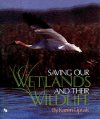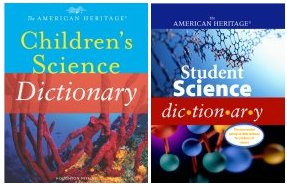Saving Wetlands Additional Information
You can learn more about Louisiana coastal wetlands at marine.usgs.gov/fact-sheets/LAwetlands/lawetlands.html (U.S. Geological Survey).
The National Wetlands Research Center has a Web site at www.nwrc.usgs.gov/ (U.S. Geological Survey).
Information for teachers and students about Louisiana wetlands and the state’s oil and gas resources can be found at www.dnr.state.la.us/teach.ssi (Louisiana Department of Natural Resources).
The campaign to save coastal Louisiana has a Web site at www.americaswetland.com/ America’s Wetland).
Information about a subcommittee hearing in the U.S. Congress concerning coastal erosion in Louisiana can be found at www.house.gov/transportation/water/
07-15-04/07-15-04memo.html
(U.S. House of Representatives).
You can learn more about JASON Expeditions and other activities at www.jason.org/.
Information about the recent “Disappearing Wetlands” expedition can be found at www.jason.org/jason_science/expeditions/dw.htm, www.jason.org/jason_news/dwmedia2.htm, and www.jason.org/jason_news/bayoublues.htm (JASON Foundation for Education).
Books recommended by SearchIt!Science:
 |
Wetland — April Pulley Sayre
Published by Twenty-First Century Books/Millbrook Press, 1996.
Explore the wetland biome and learn about the kinds of plants and animals that live there. Learn about the physical features and types of wetlands in North America. What is the difference between a swamp and a bog? Examine how all members of a biome community are dependent upon each other. Find out about the environmental threats. Projects include finding out how much water moss can absorb. Organize a wetland dinner to teach your family and friends about the importance of wetlands. |
 |
A Journey into a Wetland — Rebecca L. Johnson
Published by Carolrhoda Books/Lerner Publishing, 2004.
What do swamps, estuaries, marshes, and bogs have in common? All of these ecosystems are wetlands—places that are “covered by shallow water for all or part of the year.” Follow an alligator around her swamp in this book about the wetland biome, which introduces you to the creatures that the alligator encounters. Color photos and black-and-white sketches depict skunk cabbage, algae, crayfish, swamp rabbits, and more. |
 |
Saving Our Wetlands and Their Wildlife — Karen Liptak
Published by Franklin Watts/Scholastic, 1991.
The wetlands are Mother Nature’s natural reservoirs. Rain and snow that sink into the ground are stored in natural underground tubs in wetland areas. Wetlands are home to many different varieties of wildlife. Virginia’s wild horses at Chincoteague, Florida’s panthers, and Alaska’s arctic tern are a few unusual examples. Whether freshwater or saltwater, our wetlands are at risk. Some already have been drained to make way for construction. Color photos accompany a discussion of efforts to save our wetland ecosystems. Lists of wetlands to visit and organizations that protect them are included. |
Power Words
biome A large community of plants and animals that exists in a particular region. A biome is defined by its climate, the type of soil it has, and the kinds of plants that grow there. Grassland, tundra, desert, tropical rain forest, and deciduous forests are all biomes.
ecosystem All the living things in a community and the environment in which they live. An ecosystem includes producers, consumers, and decomposers and may be as small as a pond or as large as a rain forest. Climate, the kind of soil, and the main sources of energy are all part of an ecosystem.
estuary The wide lower end of a river where it flows into the sea. The water in estuaries is a mixture of fresh water and seawater.
wetland A low-lying area of land that is either soaked or covered with water. Marshes, swamps, and bogs are wetlands. A wetland is a kind of biome.
Copyright © 2002, 2003 Houghton-Mifflin Company. All rights reserved. Used with permission.
